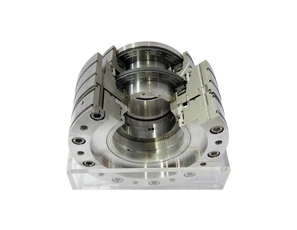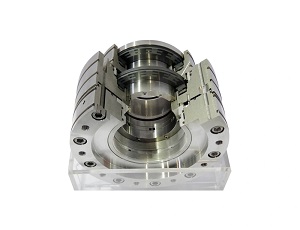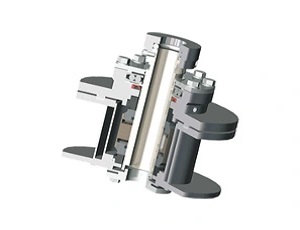As one of the foremost dry gas seal manufacturers, Zhaoqiang delivers high-performance dry gas seals designed for rotary equipment such as compressors and turbines. Our dry gas seal technology provides a critical barrier against gas leaks. They are called "dry" because they operate without lubricating oil in the sealing environment, relying instead on a gas (often the process gas itself) as a lubricant. This design helps minimize contamination and is particularly beneficial in applications where environmental regulations restrict emissions.
Key Dry Gas Seals Components:
Seal Faces: Primary Seal Ring (Rotating Seal Face): This component is attached to the shaft and rotates with it. It is typically made from hard materials like silicon carbide or tungsten carbide to withstand the operational conditions.
Mating Ring (Stationary Seal Face): This ring remains stationary and is mounted to the seal housing. It is made from similar hard materials as the primary seal ring to ensure durability and resistance against wear.
Secondary Seals: O-rings or Bellows: These provide a static sealing function between the moving parts of the seal and the stationary parts. Materials used for secondary seals include elastomers like Viton, PTFE, or other polymers, depending on the temperature and chemical properties of the gas.
Seal Housing: This component holds the stationary parts of the seal and is connected to the casing of the machine. It is designed to withstand the pressure and chemical environment of the application.
Spring (or Springs): These are used to maintain the force needed to keep the seal faces together. Springs can be a single coiled spring, multiple springs, or a wave spring, depending on the design.
Gas Panel (Control System): The gas panel regulates the supply and pressure of the gas used in the seal. It ensures that the seal operates under optimal conditions by providing a clean, dry, and appropriately pressurized gas barrier between the seal faces.
Labyrinth Seals: These are non-contacting seals that prevent the migration of gas from high-pressure areas to low-pressure areas. They work by creating a tortuous path for the gas, reducing its pressure through a series of ridges and grooves.
Sleeve or Shaft Sleeve: This component fits over the shaft to provide a smooth and compatible surface for the rotating seal face to run against. It protects the shaft from wear and corrosion.
Distance Piece: This part separates the process gas side from the atmospheric side, helping to maintain the integrity of the seal environment.
Functioning of Dry Gas Seals:
The operation of a dry gas seal involves a thin film of gas (usually the process gas itself) that is maintained between the rotating and stationary seal faces. The gas film is controlled in thickness by the gas panel system, which injects gas at a pressure slightly higher than the process pressure. This film not only acts as a lubricant to reduce wear and heat generation but also effectively seals the high-pressure gas within the machinery, preventing leaks.
When reliability and environmental compliance matter most, dry gas seal manufacturers like Zhaoqiang deliver solutions that outperform traditional sealing methods. Our dry gas seals offer unmatched efficiency while significantly reducing harmful emissions — a critical advantage in industries like oil & gas and chemical processing where operational integrity is non-negotiable. As a leading dry gas seal manufacturer, we understand these components serve as the last line of defense in protecting both your equipment and the environment.


 English
English  français
français  Español
Español  العربية
العربية  русский
русский 




